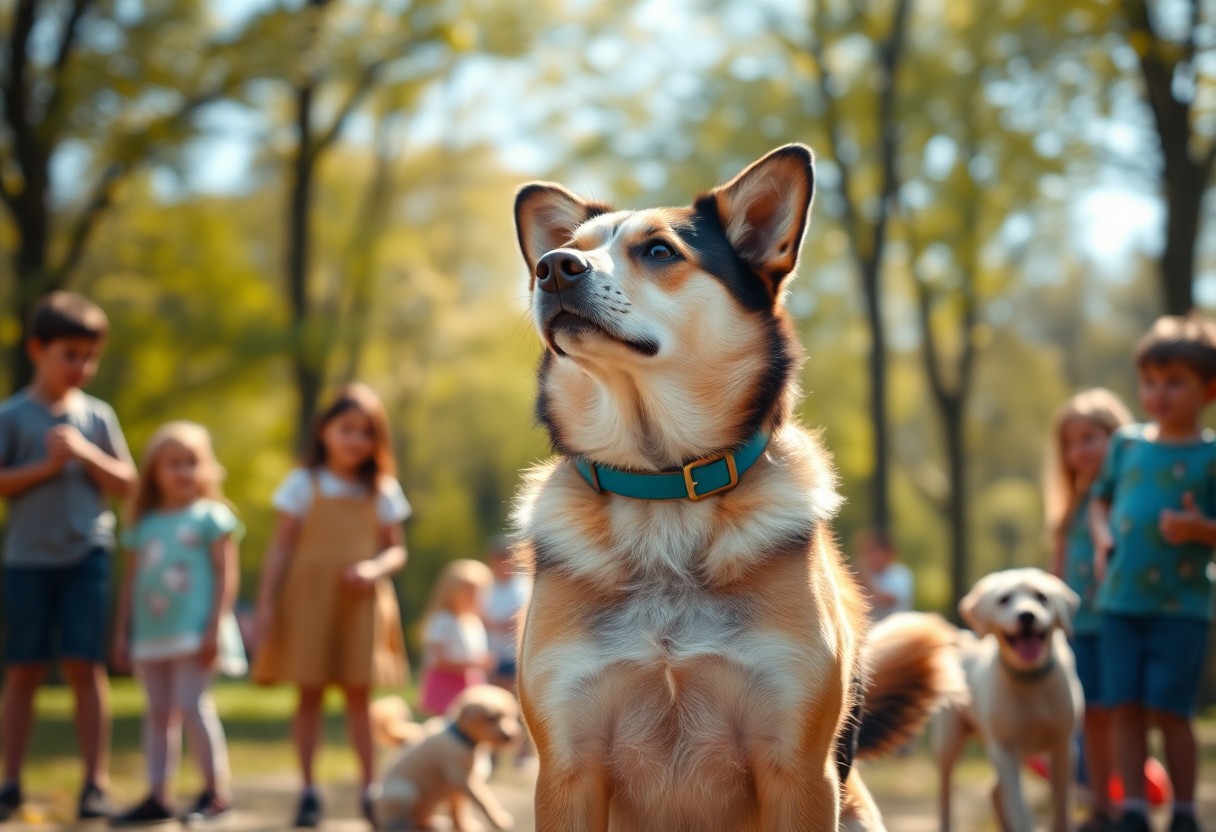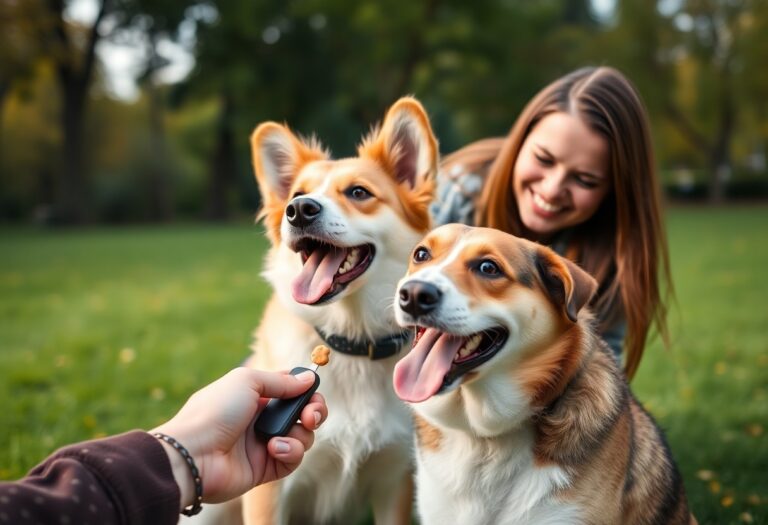Unlocking Your Pet’s Potential: The Journey from Shy to Confident
Understanding the Roots of Shyness
Unpacking the reasons behind your pet’s shyness provides the foundation for fostering confidence. Common causes include inadequate socialization during key developmental stages or overwhelming experiences that could have left a lasting impression. For example, if your puppy had a negative encounter with loud noises or unfamiliar environments, it may react warily to similar situations in the future. Understanding these triggers not only informs your training approach but allows you to incrementally expose your pet to varied stimuli, gradually building its confidence.
Concrete Steps to Build Confidence
Structured routines play a significant role in promoting a sense of security for your shy pet. Implement daily practices such as short, controlled exposure to new environments or people, while celebrating small victories with treats and praises. Engaging your pet in interactive activities, like puzzle toys or agility training, can boost self-esteem, resulting in a more adventurous spirit. Some owners have found success through training programs that focus on positive reinforcement, where canine behaviorists design sessions tailored to the specific fears of their pets. Creative methods, such as introducing safe objects or animals through gradual desensitization techniques, can significantly enhance this transformation.
The Roots of Shyness: Understanding Your Pet’s Behavior
Genetic Factors Influencing Temperament
Your pet’s natural disposition might owe a lot to their genetic makeup. Certain breeds are more predisposed to being shy or anxious; for example, while Golden Retrievers are typically known for their friendly nature, some breeds like the Shiba Inu or Afghan Hound can display more reserved behaviors. This bred-in tendency affects how your pet reacts to new situations, sounds, and people. Just as humans can have traits inherited from their parents, animals also carry behavioral trends passed down through lineage.
Research indicates that genetics can shape characteristics such as sociality, aggression, and curiosity, significantly influencing your pet’s fear or confidence levels. Having an understanding of your pet’s breed tendencies can guide you in developing appropriate training methods that best suit their unique needs. After assessing the genetic influences, the next step is to consider external factors that play a role in your pet’s shyness.
Early Life Experiences and Socialization
The framework for your pet’s behavior is often shaped during their formative days. Animals that lack proper socialization in their early weeks, particularly between 3 and 14 weeks, can develop lasting fears. If they weren’t exposed to a variety of experiences, such as meeting new people, hearing diverse sounds, or encountering other animals, their world can feel much more daunting. This fear response can manifest in various ways, such as hiding or exhibiting defensive behaviors when confronted with unfamiliar stimuli.
Every positive interaction during early development can act as a buffer against anxiety later in life. Puppies and kittens who socialize with different humans, environments, and species are generally more confident as adults. For instance, regular exposure during these critical stages can lead to more stable temperaments and a willingness to explore their surroundings. Providing these experiences is imperative in ensuring your furry friend develops into a balanced companion.
Building Trust: The Foundation of Confidence
Creating a Safe and Comfortable Environment
Establishing a secure and inviting space for your pet sets the stage for their confidence to flourish. Start by defining their area with familiar comforts like a cozy bed, favorite toys, and even items that smell like you. Ensure this space is quiet and free from stressful stimuli, such as loud noises or unexpected foot traffic. By creating a sanctuary where your pet feels safe, their natural curiosity can gradually emerge, enabling them to explore their environment at their own pace.
Minimizing interactions with unfamiliar animals or people during the early stages is also key. You might consider setting up baby gates or closed doors to restrict access to transitional areas in your home where your pet might feel overwhelmed. As they grow more comfortable with their immediate surroundings, you can slowly introduce them to new sights and sounds, fostering an atmosphere that encourages discovery while maintaining that vital sense of security.
Utilizing Positive Reinforcement Techniques
Positive reinforcement is all about rewarding desired behaviors, thereby helping your pet build their self-esteem. Utilize treats, praise, or playtime as incentives for engaging in confident behaviors, such as exploring new spaces or approaching you when they feel uncertain. For example, if your shy dog takes a step toward a new visitor or sniffs a new toy, rewarding that behavior with a tasty treat reinforces their bravery. This loving response not only boosts their confidence but also strengthens the bond of trust between you.
Training sessions that incorporate positive reinforcement should be short and enjoyable, ideally lasting around 5-10 minutes. Focus on targeting specific behaviors you want to encourage, and always conclude each session on a positive note, even if it means taking a step back to reinforce the basics. Over time, your pet will begin to associate new experiences and situations with positive outcomes, thus reducing their hesitance and fostering a greater sense of autonomy. Celebrate even small victories, as they can turn into significant leaps towards their confidence.
Engaging Activities: Fostering Confidence Through Play
Interactive Games That Encourage Exploration
Your pet’s confidence can thrive through interactive games that inspire curiosity and lessen their hesitation. Activities like hide-and-seek allow your pet to explore their surroundings while they engage with you in a playful atmosphere. For example, you can start by hiding behind a piece of furniture or in another room, calling their name softly to coax them towards you. Each time they find you, praise them enthusiastically, which builds their self-assurance as well as your bond. Moreover, using toys that dispense treats can stimulate their problem-solving skills and encourage them to venture beyond their comfort zone.
Consider incorporating scent trails or puzzle toys that challenge your furry friend to think critically. Such activities not only engage their minds but also ignite their innate desire to explore. After a few successful attempts, your pet may begin to associate exploration with positive experiences. This association is vital in gradually imparting a sense of security and confidence with their environment. Bear in mind, the key is to keep these games fun and rewarding—your excitement is infectious and will inspire them to take those initial brave steps.
Structured Activities for Social Skills Development
Structured activities play a vital role in equipping your shy pet with the social skills they need to navigate various environments. Organizing playdates with well-tempered, social pets provides a controlled setting for them to learn positive interaction. Begin by introducing them to one calm and confident pet, allowing them to observe and interact at their own pace. Gradually increasing the number of participants offers your pet the opportunity to adapt and build confidence in the presence of others. Positive reinforcement through treats or verbal praise during these interactions can significantly boost their overall experience.
In addition to playdates, consider enrolling your pet in training classes tailored for socialization and confidence-building. These structured sessions not only expose your furry friend to new stimuli but also teach vital cues and commands. For instance, obedience training can help them focus on you amidst distractions, reinforcing their self-esteem when they successfully execute commands. Such environments provide excellent opportunities for your pet to learn, practice, and showcase their growing confidence while forming relationships with you and other pets.
The Role of Training: Teaching Your Pet New Skills
Basic Commands That Build Confidence
Starting with basic commands lays the groundwork for your pet’s confidence. Commands such as “sit,” “stay,” and “come” not only help to establish your pet’s understanding of communication but also foster a sense of security. As your pet masters these commands, the repetition and success create positive experiences that bolster their self-esteem. A pet that can respond to commands feels more connected to you and understands their place in your home, thereby reducing anxiety.
Employing a consistent routine when teaching these commands can lead to quicker results. Use a friendly tone and reward your pet with treats or affection for every command they successfully execute. This positive reinforcement encourages them to engage and learn without fear of punishment, which can be overwhelming for a shy pet. Over time, you’ll observe a more confident companion who finds pride in their ability to follow your guidance.
Advanced Techniques for Overcoming Fear
Gradually introducing your shy pet to new experiences through desensitization techniques can significantly help overcome their fears. For instance, if your dog is afraid of strangers, start by having a friend approach while you reward your pet with treats from a distance. As your pet becomes more comfortable with the presence of strangers, gradually decrease the space between them. This systematic approach helps rewire their responses, turning fear into curiosity over time.
Another effective method is using counter-conditioning, which involves associating positive experiences with previously feared situations. If your pet dislikes car rides, make those trips enjoyable by bringing along their favorite toys or making stops at dog parks. By consistently pairing the feared experience with something they love, you can transform their perceptions and reactions. This shift not only enriches their life experiences but also fosters a bond built on trust and understanding.
| Basic Commands | Benefits |
|---|---|
| Sit | Establishes control and calmness |
| Stay | Promotes patience and self-discipline |
| Come | Encourages trust and responsiveness |
Advanced techniques such as desensitization and counter-conditioning can significantly alter your pet’s interaction with the world around them. Exposure to new environments, sounds, and people at their own pace helps equip them with the tools to not only cope but also thrive. As these methods prove effective, you may notice other behavioral improvements emerge, positively influencing their interactions during walks or during playtime. Consistency and patience during the training process will yield the best results as your pet develops into a more confident companion.
- Introduce new experiences gradually.
- Use positive reinforcement consistently.
- Ensure each training session is short and engaging.
- Be patient and celebrate small victories.
| Advanced Techniques | Purpose |
|---|---|
| Desensitization | Gradual exposure to lessen fear responses |
| Counter-conditioning | Change a negative response to a positive one |
From Homebody to Social Butterfly: Navigating New Environments
Gradually Introducing New Experiences
Transitioning your shy pet from the comfort of home to new environments requires a strategy that prioritizes their emotional safety and sense of exploration. Start by exposing them to low-stress environments before venturing into busier areas. An initial outing could simply be a walk around the block or a visit to a local park during off-peak hours, where the sounds and sights are less overwhelming. This slow acclimatization helps your pet to gradually build confidence and become accustomed to the new stimuli that come with different surroundings.
Utilize positive reinforcement during these experiences. When your pet engages with the environment or exhibits curiously, reward them with treats or praise. Over time, as they associate new experiences with positivity, you’ll notice a shift in their demeanor. They’ll begin approaching different aspects of their surroundings with more confidence, making future outings less daunting and more enjoyable.
Tips for Stress-Free Outings
Planning ahead significantly enhances your pet’s experience during outings. Always bring along their favorite comfort items, such as a familiar blanket or toy, to create a sense of security. Keeping a tranquil environment is imperative, so consider a pet carrier or harness that they are comfortable with, ensuring they are secure while still having the ability to explore their surroundings. Additionally, establish a routine for outings; familiarity can do wonders for your pet’s comfort level.
Observing your pet’s body language will provide insight into their comfort levels. If they appear tense or overwhelmed, take a step back and allow them to regain their composure before continuing. Frequent breaks can be beneficial. Allowing them time to sniff and investigate their surroundings will go a long way in keeping their anxiety at bay and ensuring they associate outings with enjoyment. The key to a successful outing is ensuring your pet feels in control of their situation.
- Planning ahead can enhance your pet’s experience.
- Bring along their favorite comfort items.
- Establishing a routine helps build familiarity.
- Observe their body language closely during outings.
- Frequent breaks are beneficial for keeping anxiety at bay.
The combination of thoughtful preparation and understanding your pet’s needs can transform every outing into an enjoyable adventure that fosters confidence.
- Ensure a tranquil environment by using familiar items.
- Utilizing a comfortable harness or carrier can provide security.
- Fostering a sense of control makes outings less daunting.
- Make outings enjoyable by allowing exploration.
- Monitor stress levels to maintain a comfortable experience.
The positive associations made during these outings will solidify your pet’s growth from a homebody to a confident, social butterfly in no time.
To Wrap Up
Hence, transforming your shy pet into a confident companion is not just a desirable goal but an achievable one with patience and dedication. By implementing various strategies, such as gradual socialization, positive reinforcement, and creating a safe environment, you can help your pet overcome their fears and become more outgoing. Understanding your pet’s body language and specific needs can further enhance their journey toward confidence, allowing for a stronger bond between you and your furry friend.
Ultimately, nurturing your pet’s confidence benefits both you and them, enriching your shared experiences and deepening your connection. Embrace the process, as every small step counts in building your pet’s self-esteem, and soon you’ll witness the transformation of your once timid companion into a joyful and vibrant member of your household.







